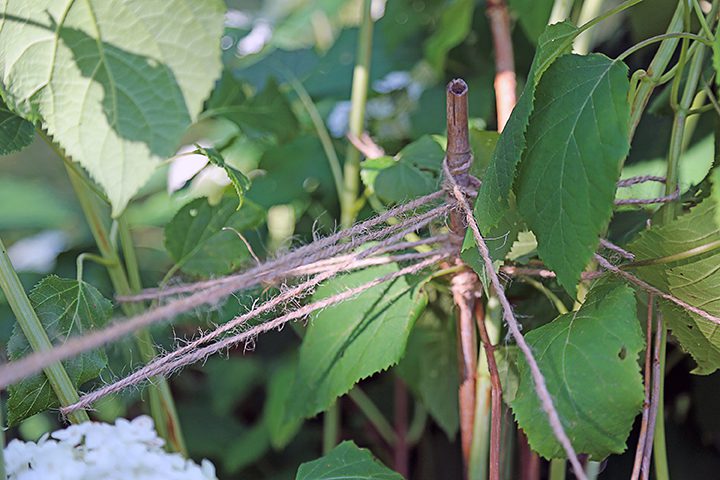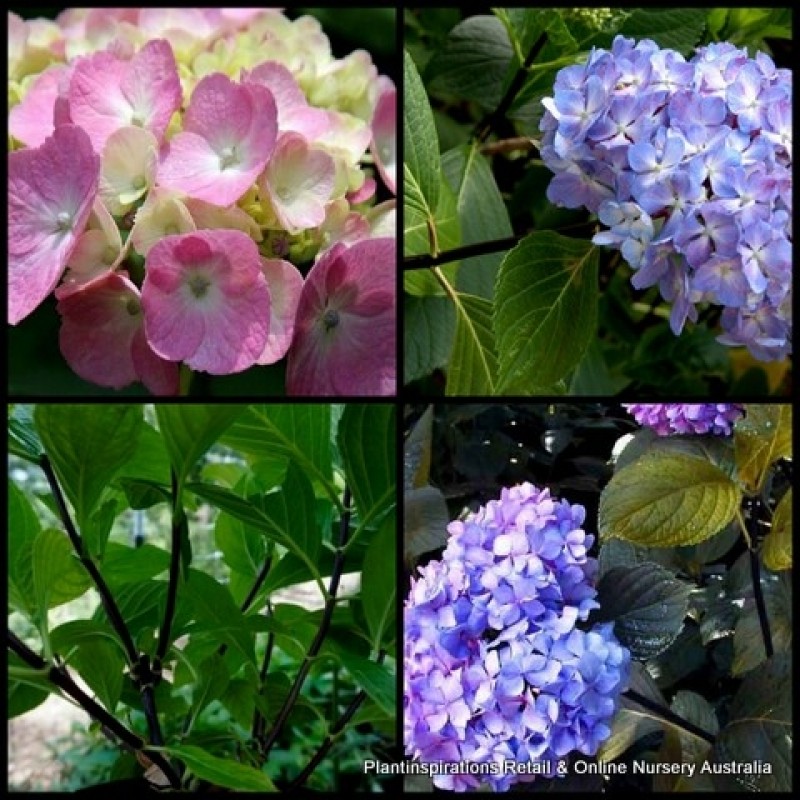Black Stem Hydrangea: The Ultimate Guide
Black Stem Hydrangea: The Ultimate Guide
Black stem hydrangeas (Hydrangea macrophylla 'Nigra') are a type of hydrangea that is known for its striking black stems. The flowers of black stem hydrangeas can be pink or blue, depending on the acidity of the soil. They are a relatively easy plant to care for and can be grown in a variety of climates.
Introduction
Black stem hydrangeas are a beautiful and versatile plant that can add a touch of elegance to any garden. They are native to Japan and Korea and have been cultivated for centuries. Black stem hydrangeas are known for their dark, glossy stems, which are a striking contrast to the delicate pink or blue flowers. The flowers of black stem hydrangeas can grow up to 12 inches in diameter and bloom in late summer or early fall.
Main Content
Planting black stem hydrangeas
Black stem hydrangeas are relatively easy to plant. They prefer full sun to partial shade and well-drained soil. The soil should be slightly acidic, with a pH of 5.5 to 6.5. If your soil is alkaline, you can add peat moss or sulfur to acidify it.
When planting black stem hydrangeas, dig a hole that is twice as wide and as deep as the root ball. Amend the soil with compost or other organic matter. Place the plant in the hole and backfill with soil, tamping it down gently. Water the plant well.
Caring for black stem hydrangeas
Black stem hydrangeas are relatively low-maintenance plants. They need to be watered regularly, especially during hot, dry weather. You should also fertilize them once a year in the spring with a balanced fertilizer.
In the fall, after the leaves have fallen, you can prune black stem hydrangeas. Prune them back to about one-third of their size. This will help to promote new growth and flowering the following year.
Overwintering black stem hydrangeas
Black stem hydrangeas are hardy in USDA zones 4 to 9. In colder climates, you may need to protect them from the cold by covering them with burlap or evergreen boughs.
Pests and diseases
Black stem hydrangeas are generally resistant to pests and diseases. However, they can be susceptible to aphids, scale, and powdery mildew. If you see any pests or diseases, you can treat them with insecticidal soap or fungicide.
Propagation of black stem hydrangeas
Black stem hydrangeas can be propagated by dividing them in the spring or fall. To divide a black stem hydrangea, dig up the plant and carefully separate the roots. Replant the divisions in separate holes.
Black stem hydrangeas can also be propagated by taking cuttings in the spring or summer. To take a cutting, choose a healthy stem that is about 6 inches long. Remove the leaves from the bottom half of the cutting. Dip the cutting in rooting hormone and plant it in a pot of well-drained soil. Keep the soil moist and the cutting in a warm, shady spot. The cutting should root in about six weeks.
Conclusion
Black stem hydrangeas are a beautiful and versatile plant that can add a touch of elegance to any garden. They are relatively easy to care for and can be grown in a variety of climates. If you are looking for a new plant to add to your garden, black stem hydrangeas are a great option.
If you're looking for a unique and beautiful addition to your garden, consider the black stem hydrangea. These striking shrubs are known for their dark, almost black stems, which contrast beautifully with their vibrant blooms. Black stem hydrangeas come in a variety of colors, including pink, blue, and white, so you can find the perfect one to match your landscape.
Black stem hydrangeas are relatively low-maintenance plants, but they do require some special care. They need full sun or partial shade and moist, well-drained soil. They should also be pruned in the spring to remove any dead or damaged branches.
If you're interested in learning more about black stem hydrangeas, I recommend visiting . This website has a wealth of information about these plants, including their history, care, and cultivation. You can also find photos and videos of black stem hydrangeas in bloom.
FAQ of black stem hydrangea
- What is a black stem hydrangea?
A black stem hydrangea is a type of hydrangea that has dark-colored stems. This is caused by a natural pigmentation in the plant's cells. Black stem hydrangeas are typically found in cooler climates, as they are more susceptible to damage from hot, dry weather.
- Why do black stem hydrangeas have black stems?
The black stems on black stem hydrangeas are caused by a natural pigmentation in the plant's cells. This pigmentation is called anthocyanin, and it is responsible for the red, purple, and blue colors in many plants. In black stem hydrangeas, the anthocyanin concentration is high enough to give the stems a dark brown or black color.
- Are black stem hydrangeas rare?
Black stem hydrangeas are not rare, but they are not as common as other types of hydrangeas. They are typically found in cooler climates, as they are more susceptible to damage from hot, dry weather.
- How do I care for a black stem hydrangea?
Black stem hydrangeas are relatively easy to care for. They prefer full sun to partial shade and moist, well-drained soil. They should be watered regularly, especially during hot, dry weather. Black stem hydrangeas are also susceptible to anthracnose, a fungal disease that can cause black spots on the leaves and stems. If you notice any signs of anthracnose, prune out the affected leaves and stems and treat the plant with a fungicide.
- What are the benefits of black stem hydrangeas?
Black stem hydrangeas are beautiful plants that can add a touch of elegance to any garden. They are also relatively low-maintenance, making them a good choice for busy gardeners. In addition, black stem hydrangeas are said to have some symbolic meaning. For example, some people believe that they represent gratitude, grace, and beauty.
Image of black stem hydrangea
- Image 1: A large black stem hydrangea bush with pink flowers in full bloom. The leaves are a deep green color and the stems are a dark, almost black color.

- Image 2: A close-up of the flowers of a black stem hydrangea. The flowers are a deep pink color and they have a slightly wavy edge. The petals are thick and glossy.

- Image 3: A black stem hydrangea bush in the fall. The leaves have turned a beautiful yellow color and the stems are still a dark black color.

- Image 4: A black stem hydrangea bush in a pot. The bush is full of flowers and the leaves are a dark green color. The pot is a white color and it has a black rim.

- Image 5: A black stem hydrangea bush in a garden. The bush is surrounded by other flowers and plants. The sun is shining and the sky is blue.

Post a Comment for "Black Stem Hydrangea: The Ultimate Guide"